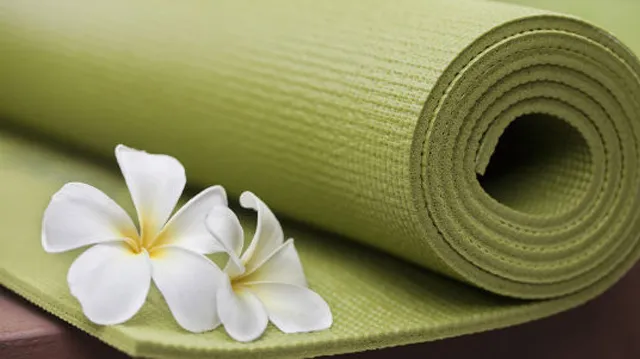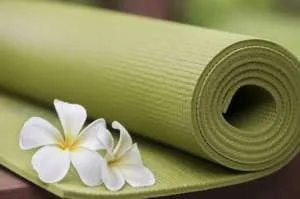
- Share on Facebook25
- Share on Pinterest
- Share on Twitter
Yoga continues to get more and more popular, with more styles and teachers seeming to emerge all the time. With all of the options on the schedule at your local yoga studio, it might be difficult for a first-timer to decide which class to join.
Here’s a list and description of seven of the top yoga styles, to help newbies decide which class to try out, and to encourage experienced yogis to consider something new!
1. Vinyasa Flow Yoga
Perhaps the most popular form of yoga in the US, Vinyasa Flow is a movement-intensive practice that features poses held for only a few breaths, and quick transitions in between. The idea behind the practice is that the mind stays Zen when so much concentration is put on the flowing nature of the breath and the body.
Although no two Vinyasa classes are exactly alike, in general these classes feature fun music and can get pretty sweaty—especially if they’re heated.
Good for: People who want a more ‘fun’ and active practice, and love to sweat. Beginners should look for names like ‘slow flow,’ or ‘gentle flow,’ until they get used to the quick, dynamic style.
2. Hatha Yoga
Although some yoga purists will say that all of the styles on this list stem from Hatha Yoga, that doesn’t mean that classes listed under this name don’t have some things in common. A Hatha class will normally feature a warm-up with sun salutations, followed by a number of unhurried, gentle poses and stretches held for between 30 seconds and two minutes.
It will often also include pranayama (breathing exercises) at the beginning or end, along with some pre or post-class chanting.
Good for: Great for beginners, but also recommended for more experienced practitioners who want to understand how this thing we call ‘yoga’ began!
3. Ashtanga Vinyasa Yoga
Probably the most athletic practice on this list, Ashtanga Vinyasa Yoga is a set series of postures performed in the same order, linked by powerful ‘vinyasas,’ or a quick sequence of poses designed to connect the body and breath. ‘Ashtangis’ are often highly disciplined and intensely devoted to their practice.
Many studios also offer classes for beginners, but be sure to speak to the instructor about past exercise routines and/or injuries first.
Good for: Experienced yogis, athletes and others who are already in excellent shape, as well as people who are highly disciplined and prefer routines and knowing what posture is coming next.
4. Yin Yoga
Far slower, gentler, and more meditative than any other style listed so far, Yin Yoga is different from other forms of yoga in that it targets connective tissue—the tendons, fascia, and ligaments surrounding a joint—rather than muscles. Poses are held for a long time (usually 5-20 minutes), and students are encouraged to breathe deeply, relax, and meditate through these postures, noticing the (often uncomfortable) sensations in the body.
This is a great style of yoga for those with a sitting meditation practice.
Good for: Meditators or those who want to sit more comfortably in meditation, people looking for a gentle, relaxing, flexibility-oriented practice to compliment another fitness routine.
5. Bikram Yoga
Bikram’s trademarked sequence of 30 poses performed in a heated and humidified room will make you sweat more than you even thought was possible. Seriously, you will drip. Bikram Yoga is both very popular and very controversial, as its teachers tend to be strict, and students, if they don’t take proper precautions, sometimes suffer from dizziness or dehydration during class.
Many people, however, swear by this style of yoga, claiming the intense class is the best way to detox, heal, and get limber. If you want to try out a Bikram class, just be sure to get plenty of sleep the night before, and to pre and re-hydrate!
Good for: People who like their yoga intense and SWEATY.
6. Restorative Yoga
This style of yoga is true to its name, as many of the positions you’ll find yourself in during a Restorative Yoga class won’t even feel like ‘yoga’ pose, but instead like you’re a baby curled up in the womb. In restorative yoga, all of the poses are passive—there’s absolutely no effort required on your part—and props like cushions, bolsters, and straps are often used to put your body in positions that make you feel as relaxed and secure as possible.
You will finish the practice feeling, as the name suggests, totally renewed, restored, and maybe even blissful!
Good for: People who are under a lot of pressure, often feel anxious or stressed, and/or need some time to themselves to relax and unwind.
7. Iyengar Yoga
 Named after its founder, B.K.S. Iyengar, this style of yoga pays closer attention to alignment (doing the pose properly) and safety than any other style. Iyengar teachers have to complete at least 2 years of full time teacher training (as opposed to the month-long, 200-hour certifications held by many yoga teachers). Thus, instructors are usually highly knowledge about anatomy and the ways that one’s individual body structure will affect their yoga practice.
Named after its founder, B.K.S. Iyengar, this style of yoga pays closer attention to alignment (doing the pose properly) and safety than any other style. Iyengar teachers have to complete at least 2 years of full time teacher training (as opposed to the month-long, 200-hour certifications held by many yoga teachers). Thus, instructors are usually highly knowledge about anatomy and the ways that one’s individual body structure will affect their yoga practice.
Because of this, they will almost always incorporate props like blocks, straps, bolsters, sandbags, and even swings, so that every student can perform each posture optimally and safely. All this attention to detail takes time, however, so you may only perform 3-5 postures in one class.
Good For: New and experienced yogis who want to better understand anatomy, and anyone with past or present injuries. Also, perfectionists will LOVE Iyengar Yoga.
The list of the benefits of yoga keeps getting longer, and there’s no better time to start than now! Before you start a yoga practice, however, be sure to speak to your doctor and instructor about any injuries or concerns you might have.
Your instructor can also be a great resource in helping your decide which class(es) to try.
-The Alternative Daily
Sources:
http://www.health.com/health/gallery/0,,20659887_2,00.html
http://life.gaiam.com/article/beginners-guide-8-major-styles-yoga
http://www.prevention.com/fitness/yoga/best-yoga-classes-your-personality
- Share on Facebook25
- Share on Pinterest
- Share on Twitter

